
Oh, what a trip!
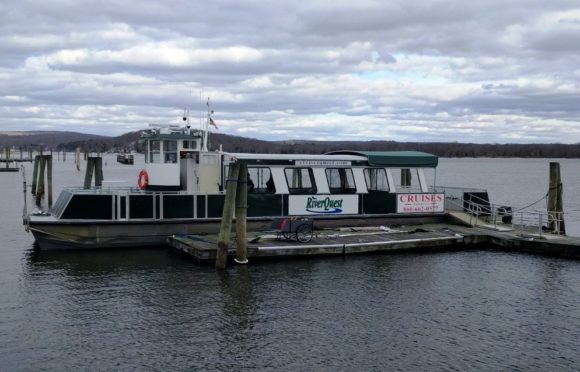
RiverQuest hosted several members of the Fourth Estate recently on a wonderful Winter Wildlife Eagle Cruise. Temperatures were distinctly chilly last Wednesday afternoon (Feb. 13), but the heated cabin stayed warm while the boat gently sailed upstream from the Connecticut River Museum.
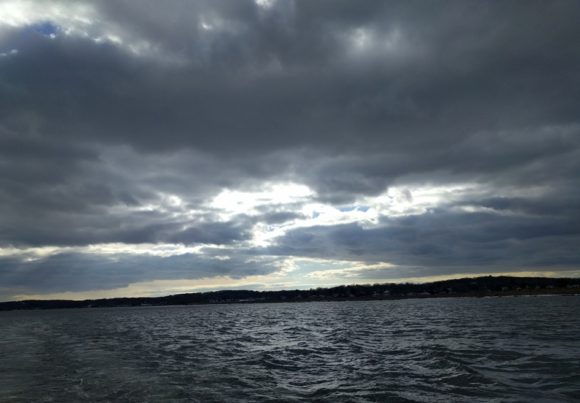
The views were stunning throughout the trip and, despite the frigid temperatures, the majority of the 30 or so on board stayed outside most of the time to enjoy the whole experience to the full.
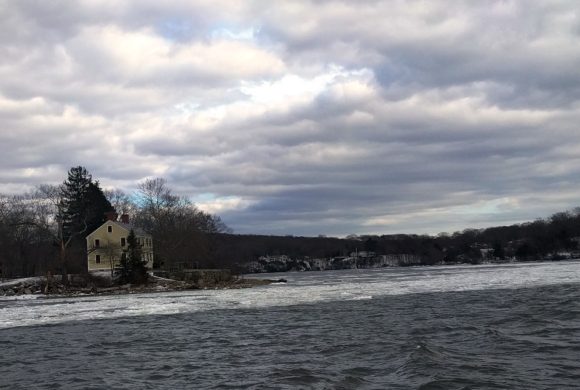
As we sailed north, apart from all the wildlife on the water and in the sky, we saw the mast of the luxury yacht that has sunk in Hamburg Cove and the always delightful view of Gillette Castle high atop its East Haddam perch overlooking the Connecticut River.
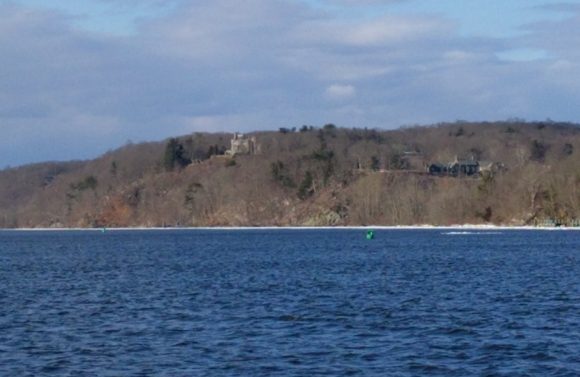
Naturalist and lecturer Bill Yule shared a vast amount of fascinating facts, figures, history, happenings, and anecdotes about the river and its inhabitants, ably accompanied by naturalist and crew member Cathy Malin.
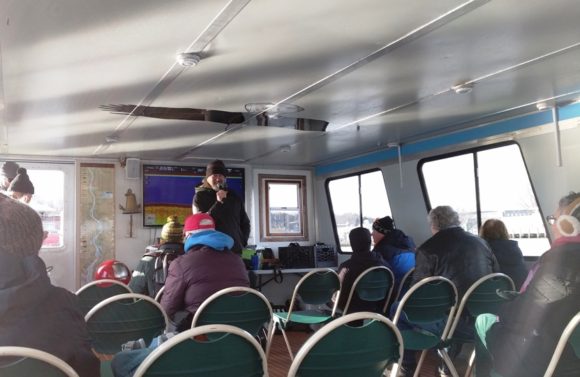
Both were on board for the duration of the trip and, while not busy disseminating information in a lively and engaging manner, they were actively spotting and identifying wildlife of all shapes and sizes on, above and alongside the river and its banks. They also took great care to ensure the passengers were at all times warm, comfortable … and supplied with plenty of hot coffee!
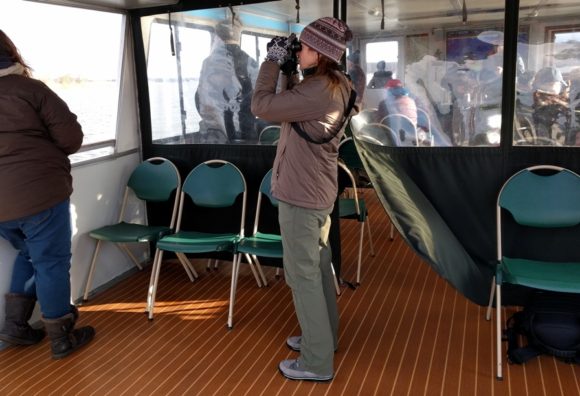
Although named an ‘Eagle Cruise,’ the sighting of an eagle cannot, of course, be guaranteed, but we were fortunate to see 13 bald eagles on our trip, one flying immediately alongside the RiverQuest, and also enjoyed numerous sightings of cormorants, black-backed gulls, and common merganser ducks.
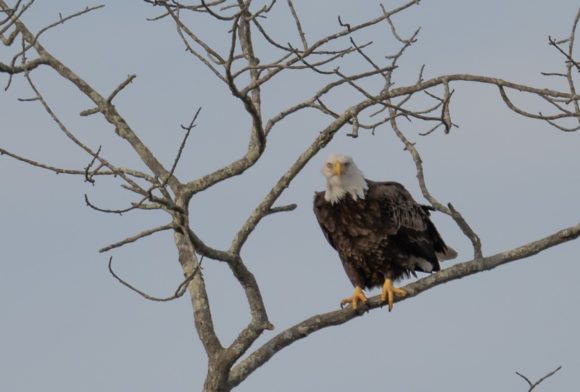
The bald-headed eagle — the national emblem of the United States of America — reaches maturity at around age four when it acquires its signature white head and maximum wingspan of approximately six feet.
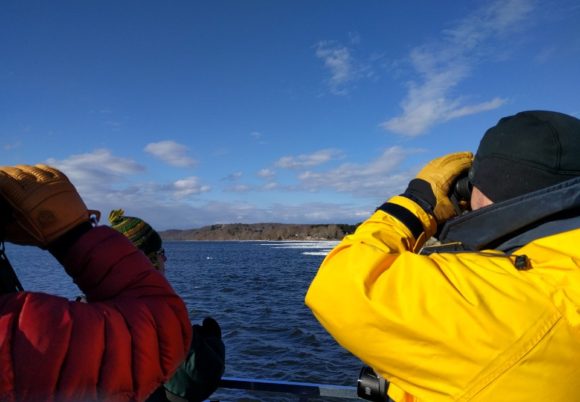
Declared an endangered species in 1973 with the passage of the federal Endangered Species Act, bald eagle populations slowly began to recover following the ban on DDT, and by 2007, populations had recovered to such an extent that the species has now been removed from the endangered species list.
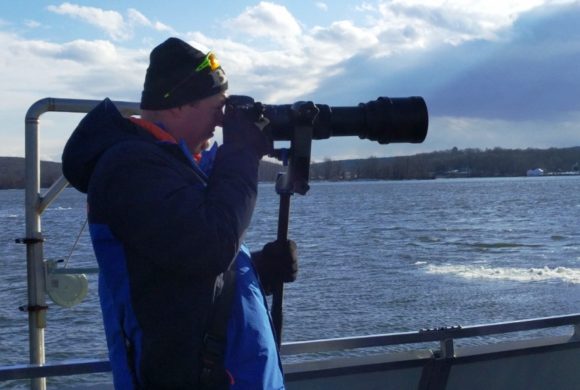
The magnificent raptors are, however, still protected on the federal level by the Bald Eagle and Golden Eagle Protection Act of 1940 and the Migratory Bird Treaty Act of 1918.
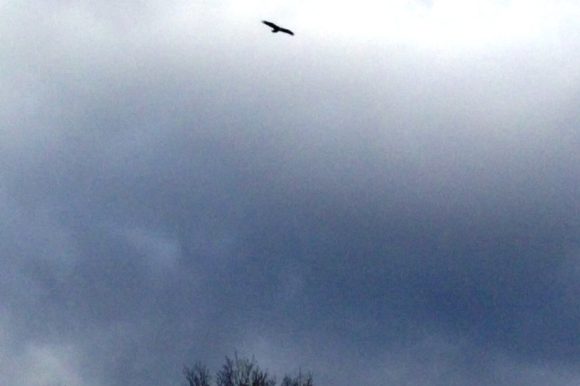
Every winter a number of bald eagles migrate south looking for open water on which to feed as the lakes and rivers in Canada and northern New England freeze. Many of these magnificent birds stop in Connecticut and winter along major rivers and large reservoirs, where they can also be seen feeding and sometimes nesting on the banks of the Connecticut River.
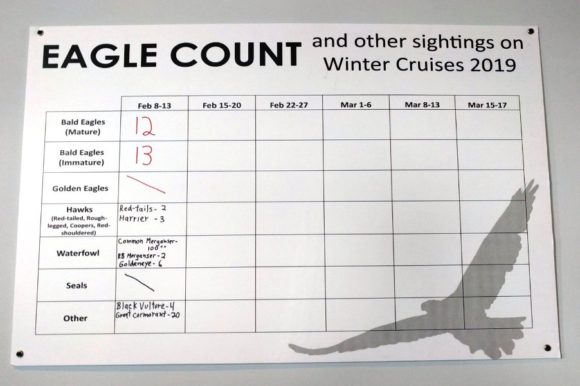
Counts taken in 2018 indicated there were 80 pairs of nesting bald eagles in Connecticut, which produced a record 68 chicks.
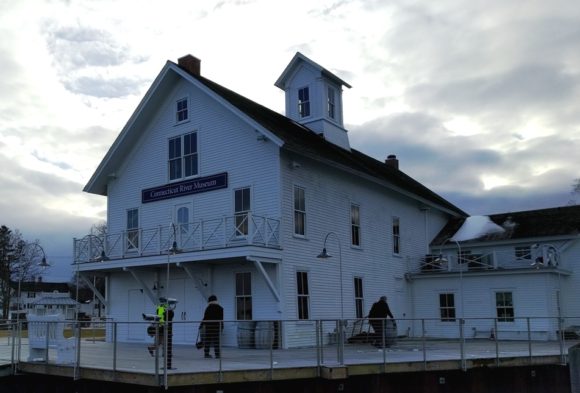
The Connecticut River Museum is currently hosting a “Big Birds of Winter” exhibit, which offers an excellent overview of all the birds that might be seen on the river.
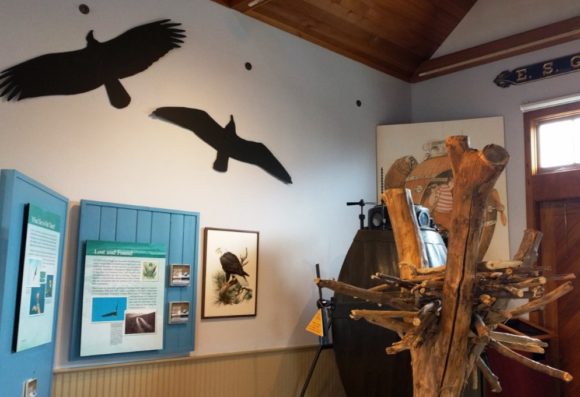
Your $42 ticket not only gives you two hours on the river aboard the RiverQuest, but also admission to all the exhibits at the Museum.
Our unequivocal opinion of this wonderful trip is simply, “Take it … it deserves two big thumbs up!”
Editor’s Note: For more information on Winter Wildlife Eagle Cruises, visit this link. For more information on RiverQuest and all the trips they offer, visit this link. For more information on the Connecticut River Museum, visit this link.